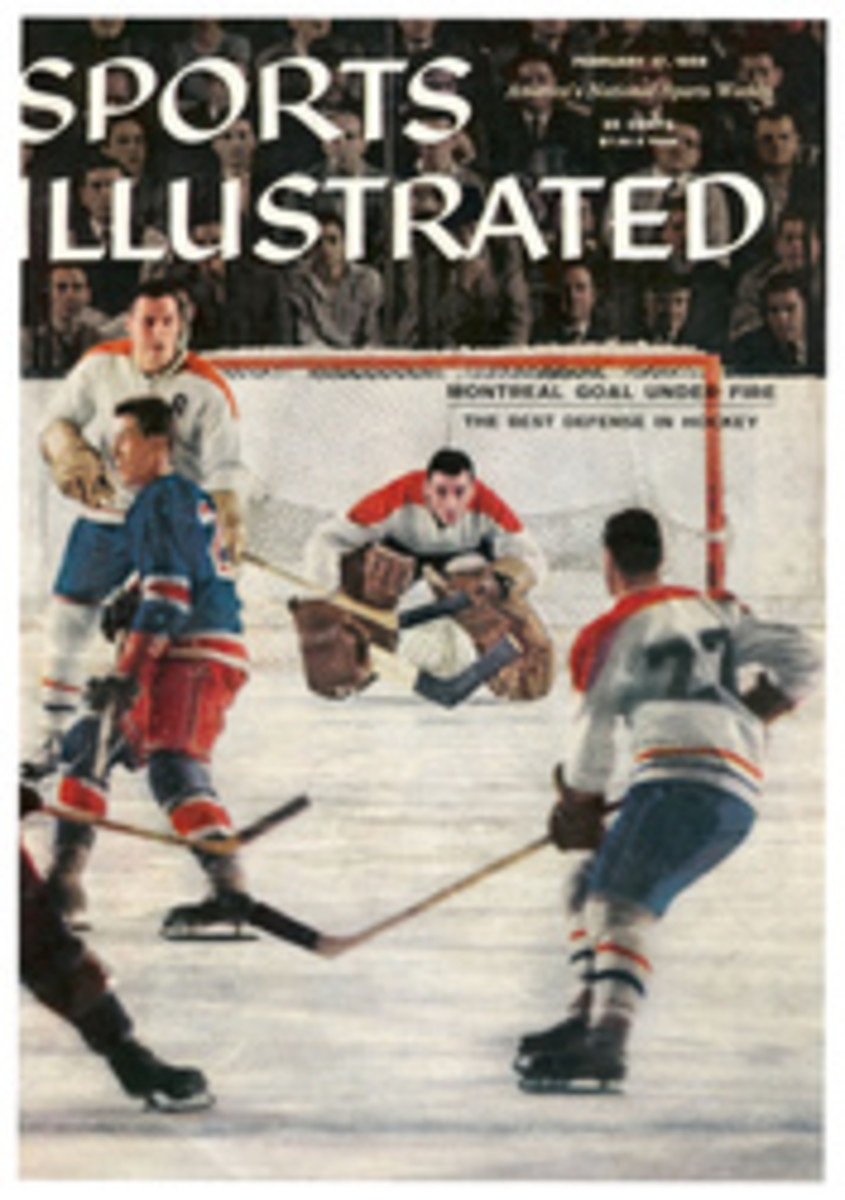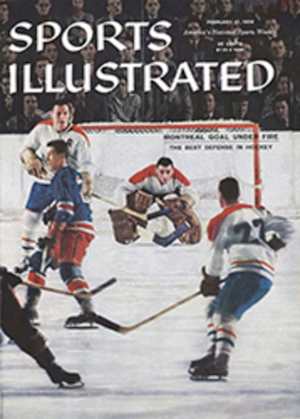
The Perfect Free Throw
For five successive years now Bill Sharman has led the National Basketball Association at the free-throw line with an 85%-plus average. He holds the record with 55 in a row in competition and with 11 straight floor shots. Sharman's concentration and confidence while shooting cannot be shown graphically; they are, of course, fundamental to the success of the technique here described.
Preparatory stance shows body generally loose, with the knees slightly bent, right elbow pulled in above hip for firm control, right foot pointed at basket, left foot at 45° angle. Position is taken after deep breath and pause to relax from game tension. At this time ball is held with both hands and raised to level for sighting over top, ball obscuring most of net.
Waggling ball before shot loosens wrists, also gives "feel" of ball weight, which varies with player's condition.
Shooting position, taken after waggle, has ball controlled only by tips of fingers, where sense of touch is concentrated.
To prevent ball from rolling off side of hand, knuckles are at angle to seam, not parallel. Aim is at basket, not board.
At instant of release (left), ball should roll off only three fingers if held properly. (See bottom sketch on opposite page.) These are the thumb, index and middle fingers. Soft trajectory and back spin help ball "sit" on rim if it hits, rather than bounce off wildly.
Follow-through is just as essential as in golf or baseball swing. If free-throw motion is smooth, follow-through flows naturally. Arm is fully extended and in straight line. Wrist is still at same angle as in first step. Eyes never leave basket. Sharman uses this type of free throw because it is the same in most essentials as the one-hand jump, so a player practices one while executing other.
Numbers 1 to 4 show smooth, single-motion windup. Between 4 and 5, ball is brought back and wrist cocked. Then thrust begins in legs, moves up through body as arm is extended, and push is imparted by sum total of these forces. Ball is not thrown. It is propelled by precisely the same flow of power as in putting the shot. Feet do not leave the floor, so balance is maintained.
ILLUSTRATION
1
ILLUSTRATION
2
ILLUSTRATION
3
THREE ILLUSTRATIONS

